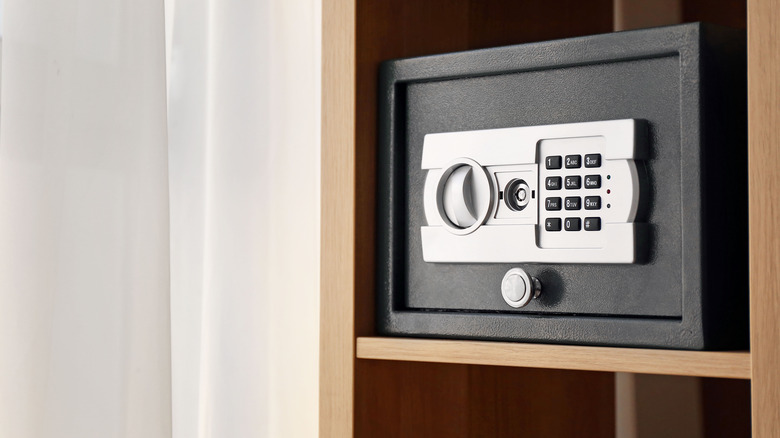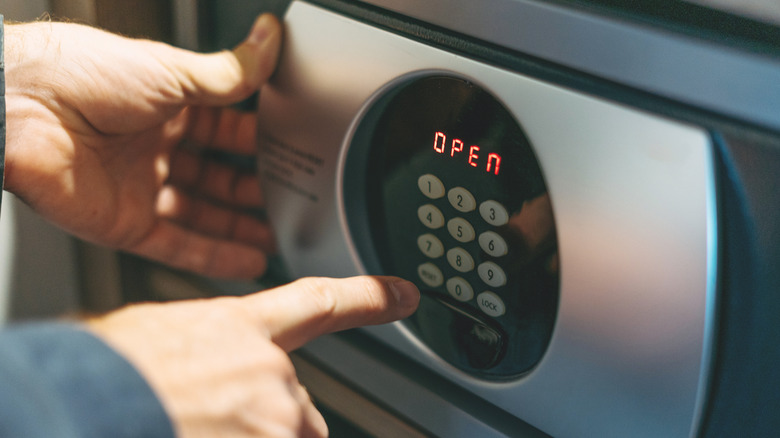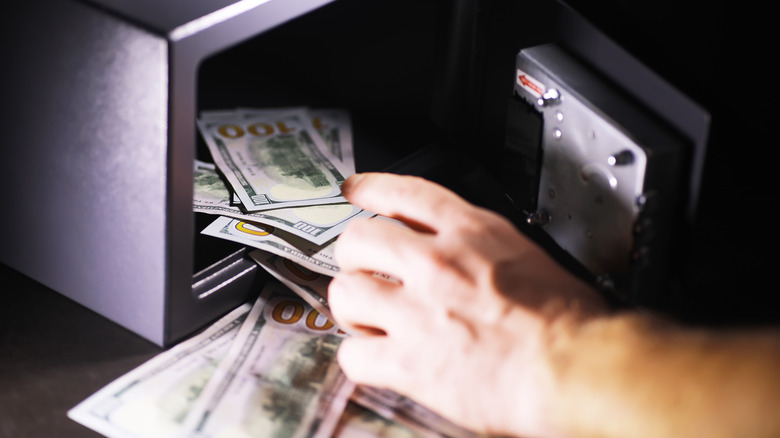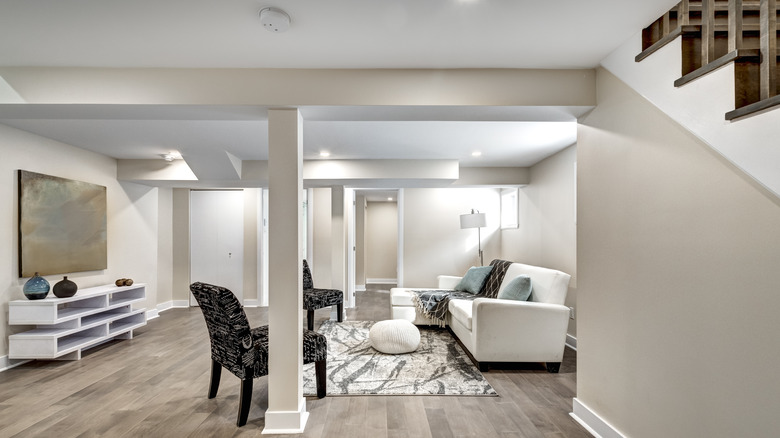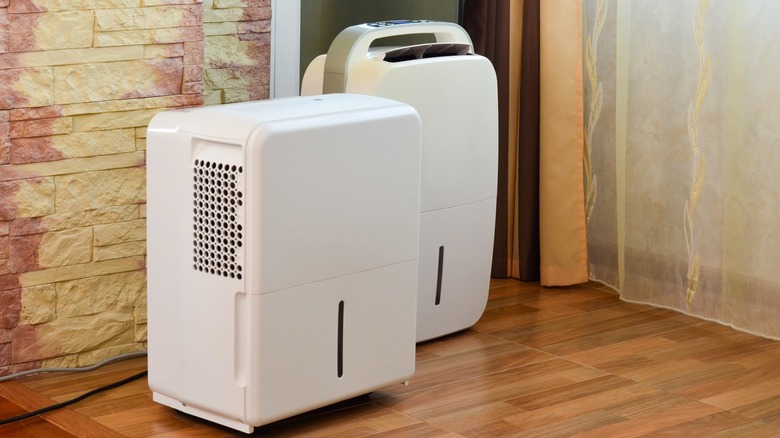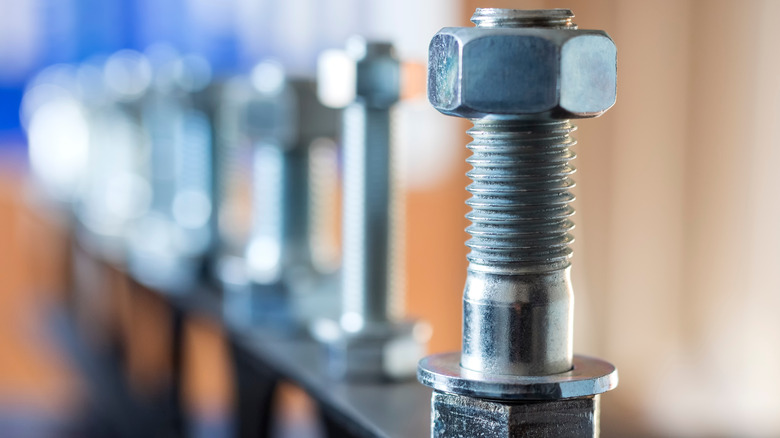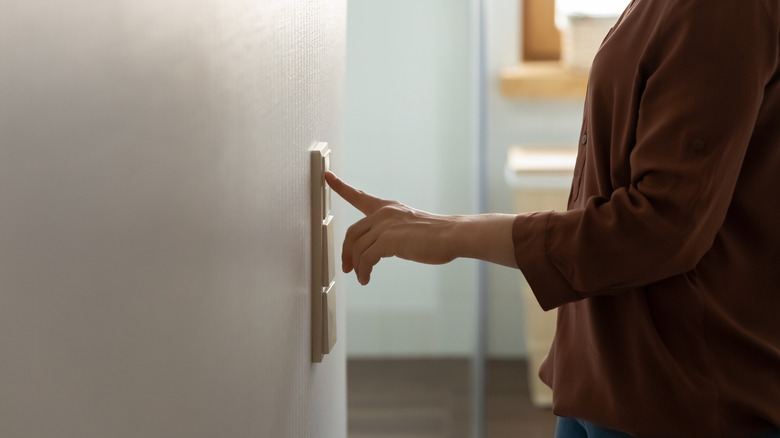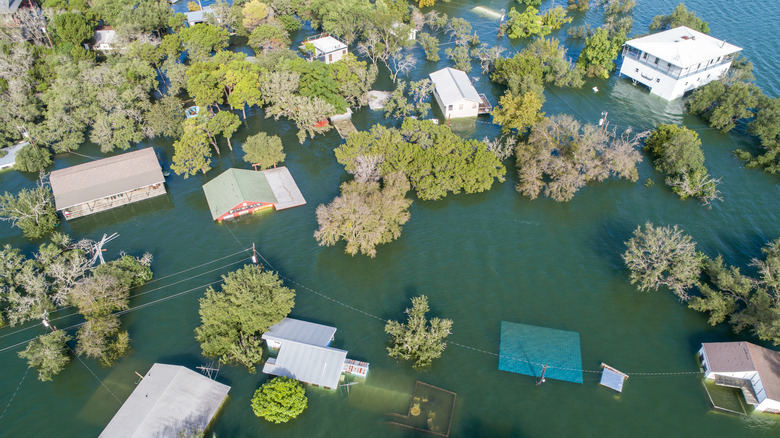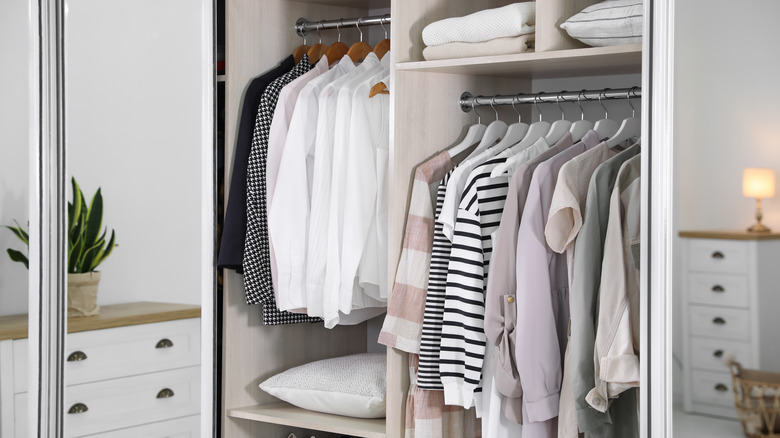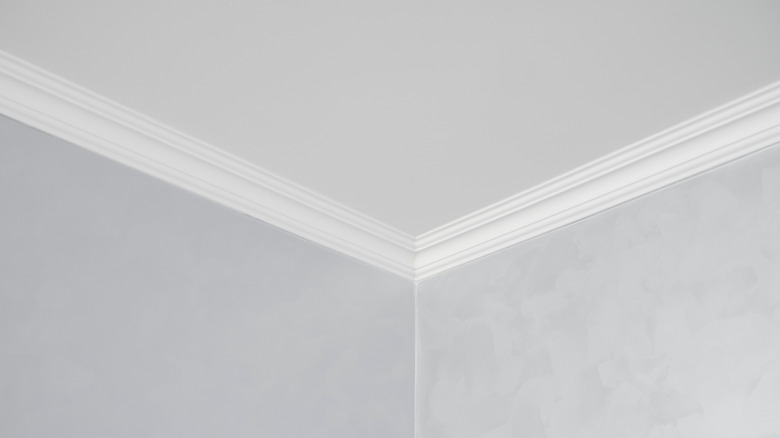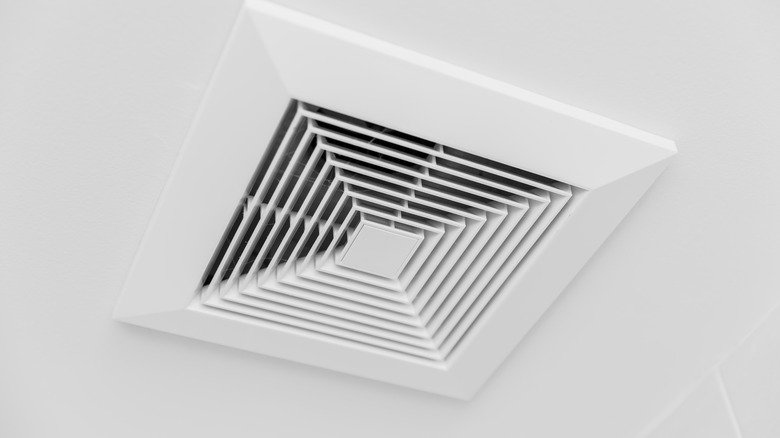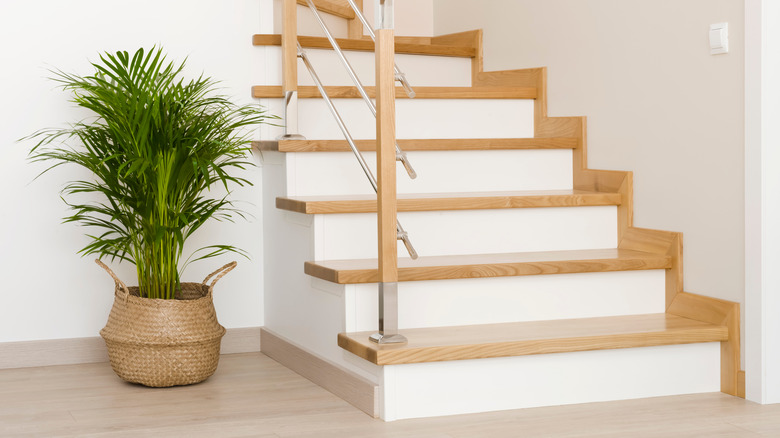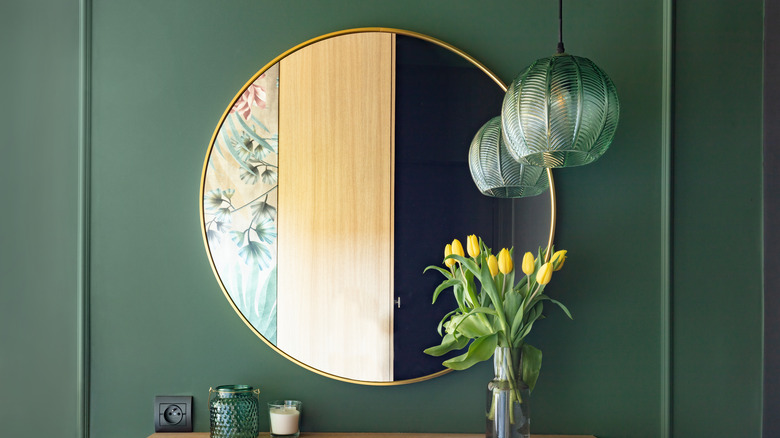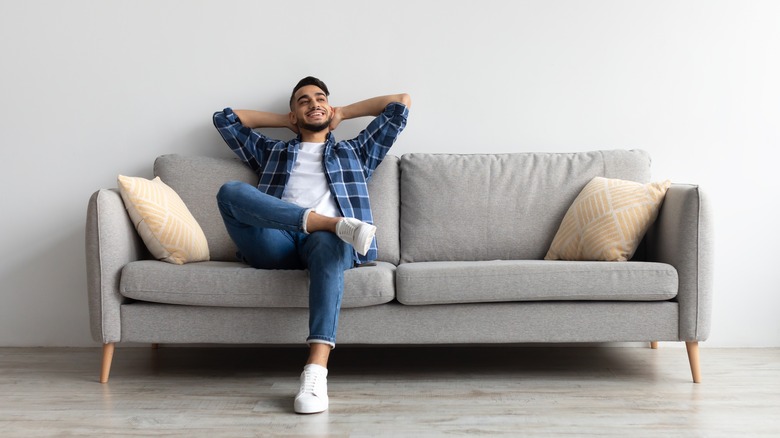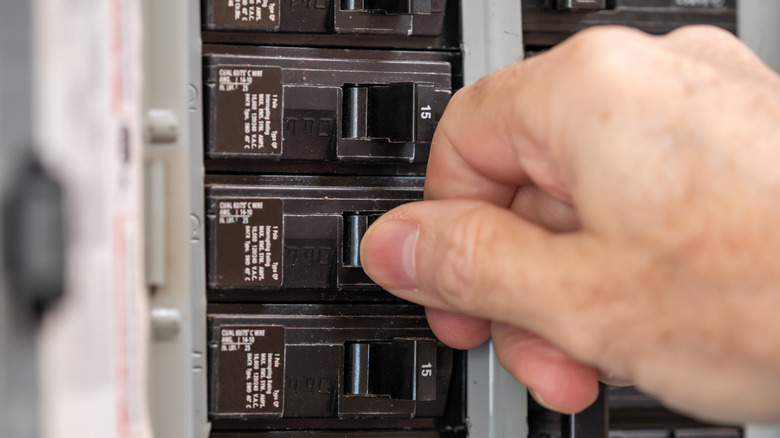What's The Best Place To Install A Safe In Your House
There are plenty of ways to keep your home safe these days but installing a safe is one the best. Adding a safe to your home gives you a dedicated space to store your valuables and keep specific items like guns and jewelry safe. Since burglaries are more common than many think, now's the time to invest in a home security system, install a safe for your living space, and put your mind at ease. According to Safe at Last, an astounding 2.5 million burglaries occur annually, with 66 percent as a home break-in.
Beyond that, 85 percent of burglaries are by non-professionals, and $2,416 is the average loss per burglary. It's essential to not only have a safe but ensure it's hidden in a spot where it won't be seen and broken into by thieves. Many places in your home present the perfect place to keep your valuables safely tucked away, including the basement, attic, floor, the sink, and on walls. Read on to hear where you should consider putting your safe.
Why you need a safe in your home
Now more than ever, a safe in your home can help protect your most precious belongings. According to Life Hack, a safe is a vital must-have. Safes keep your most important documents safe — like birth certificates, wills, legal papers, tax documents, and home and auto titles. These documents are not only irreplaceable in some instances, but if they get into the wrong hands, you risk someone stealing your identity. Safes can safeguard against not only burglars but also against the elements and disasters — like fires, hurricanes, and tornadoes.
Safes can also keep your home safe if you own a gun. A safe is a reliable place to store a weapon and ensure it doesn't get into the hands of kids or anyone not licensed to use it properly. Safes give you peace of mind when you're away from home, when you have workers at your house, and provide a central place for storing valuables.
Preparing yourself and your home for a safe
Once you're ready to invest in a safe, prepare yourself for installation. To get ready for this investment, you'll need to do some research, per Nashville Safe House. For instance, you'll need to decide what size safe best suits your needs by thinking about what will go inside. You don't want to purchase a safe that's too small.
You'll also need to figure out where, exactly, you'll be installing your safe, as that will affect the type you ultimately buy. At this point, it's essential to consider what is important to you regarding this purchase. For instance, are you looking to protect more against burglary or fires? While floor safes are a reliable way to prevent burglars from obtaining your valuables, they're not necessarily the best defense against fires. All in all, you have some decisions. You'll need to select the best spot for your safety and buy a model that suits your specific needs.
In your basement
The basement is one of the best places to install a safe in your home. Whether you have a small or unfinished basement, this space provides plenty of security. According to DuPage Security Solutions, a basement is a great spot to keep your safe, as it is a hidden area within your home. Plus, they usually offer an abundance of room for storing your safe, meaning you'll be able to choose one that fits all your valuable possessions.
When you store your safe in your home, there are a few features you may want your safe to have. First, a safe with a light-up keypad will make it easier to get into it since basements tend to have less light. Additionally, you may want to choose a model with mounts and anchors, as placing a safe in the basement makes it easy to bolt to the ground as an added security measure. That way, no matter the size of the safe, no one can pick it up and walk away with your safe in tow.
Pay attention to the humidity
If you store your safe in your basement or another humid place in your home, you want to keep the contents well-preserved. Hunker notes that high humidity around your safe can increase the moisture level inside. In addition, during the winter, cold air trapped inside your safe can create condensation as the air inside your home warms up. Since fireproof and waterproof safes feature airtight seals, any moisture locked inside the safe has no chance to evaporate.
There are a few reasons this can be problematic. Documents in your safe and metal objects — including firearms and jewelry — can corrode. Finally, mold and mildew thrive in moist environments, which can ruin whatever is in your safe. To prevent this from happening, you should regularly open your safe to let moisture escape, try to store it in a dry area, or use moisture-absorbing products in your safe as a fail-safe. These include calcium chloride, a small bowl of rice, or an open box of baking soda.
Bolting a safe to the floor
A measure you may want to consider with your safe is bolting it to the floor of your home. This tip prevents thieves from being able to pick up your safe and steal the entire thing during a burglary. While it may seem like a tall task, you can complete it with relative ease, per wikiHow. A wood or concrete foundation is best. A concrete foundation is ideal for a large safe, as it can hold more weight safely.
Choose a spot that's both secure and easily accessible. Since most safes feature mounting holes in the middle or bottom corners, you just need to mark and drill the anchor holes on the floor where you will mount the safe. After that, insert the bolts and hammer them down to secure the safe. Tighten the bolts with a wrench or pliers, and your safe will be incredibly secure!
Installing a wall safe
Placing your safe on a wall is another great option. According to USA Safe & Vault, this is a secure way to store your valuables, as you can easily conceal a wall safe behind a piece of furniture like a bookcase, large sofa, china cabinet, or a picture frame. Additionally, there are many high-tech options on the market, with different types of construction and locks. You can easily choose what you need and want from the safe.
If you go with a wall safe, ensure it's never in front of a window, as you wouldn't want an onlooker to see you installing or accessing this covert safe. It's also worth noting that a wall safe will likely be a smaller option than a floor safe, so if you have an abundance of valuables that you need to store, it may not be the most logical option.
Above ground level
If your home is in a flood zone, it's best to avoid installing your safe in your basement. That's because your valuables could end up victim to water damage in a natural disaster, even in a safe. Instead, you should install your safe above ground level. Consider putting it somewhere on the upper floor of your home if possible. Especially when it comes to personal documents, cherished family photos, or artwork, you don't want to deal with water damage or the potential loss of these items.
Beyond that, you should also ensure your safe is waterproof if you live somewhere where these natural disasters are prevalent. This is an essential measure for anyone living in a flood zone, and it's also crucial in the case of a fire. When firefighters come to put out a fire, the water they use to extinguish it could penetrate your safe and ruin the items inside.
Inside your closet
Your closet is another place in the home you might want to consider for your safe. This tip goes for gun safes and regular safes that hold all kinds of valuable possessions. According to A Man and His Gear, there are some advantages to hiding your safe in a closet.
First, closets are accessible. You can quickly get to yours, allowing easy access to the safe. Closets are relatively small spaces typically enclosed on at least three walls, making them a safe spot. Plus, most homes have different types of closets. That means that a burglar would have to search each closet to get to your safe, making it harder to find in the event of a break-in. Finally, closets are usually not a spot where guests visit, allowing your safe to be tucked away in your home. If you decide a closet safe is the best option, ensure you carefully measure the space before installation.
In a corner where two walls meet
A clever place to install a safe is in a corner of a room. Install your safe in the corner where two outside walls meet. According to Liberty Safe on YouTube, lining up the corner of the safe with the corner of the walls is an excellent idea for a sleek and unobtrusive design. That means that one side of your safe will be flush against the corner where the two walls meet. Installing your safe in a basement corner if you have the space is typically the best approach.
If your safe is heavy, installing it against a corner will provide good support. In this case, you can put the safe on the floor in the corner. For maximum safety, you should bolt it down to the ground if possible, making it impossible for someone to take the safe from your home.
Under an air vent
If you want your safe to be hidden and covert, an air vent safe is the way to go. According to Ballistic Magazine, crooks are savvier now than ever, and a run-of-the-mill safe with a keypad or combination lock may not be enough to stave them off. An inconspicuous air vent safe may be a worthwhile investment. Believe it or not, fake air vent-style safes are available on the market. One caveat to be aware of with this hidden in plain sight safe is that it may not be lockable or fire resistant, which more traditional safes are. While you can purchase some fake air vent safes with locks, they will cost you more — likely upwards of $200.
These safes look like a standard-issue vent that connects to your home's HVAC system. However, it's a vent faceplate connected to a steel box that installs inside your wall. Once you purchase it, you'll have to follow the instructions for cutting the wall and fastening the safe. After that, it'll be ready for you to stow valuables inside.
Under the stairs
An under-the-stairs safe may seem like something you only see in movies or on TV, but in reality, this spot is a strong contender for where to stow your most valuable possessions. David Molyneux shared a video on YouTube displaying a set of motorized steps that lift from the front, revealing a hidden spot for shoes and a tucked-away safe. The first four steps open and close via two linear actuators. Conveniently, you can operate this with the simple click of a remote.
Under your stairs makes for the perfect hiding spot since stairs have a cavity behind them (via Point2Homes). If you can't commit to completely motorizing your stairs, there are other options for using them as a hiding place. You can instead install a safe behind a removable riser or tread. This shelf can replace the riser entirely, allowing access through a secret door covertly hidden by a stair tread or carpet runner.
Behind a mirror
We often see crooks in movies or TV shows reveal a safe behind a piece of art in a home, so that may not be the most logical idea anymore. Too many people are on to it! What's more clever and — most likely — secure is to add a safe behind a mirror. It's a relatively easy DIY project to install, as seen in DIY Xtopher's video on YouTube.
What looks like a full-length mirror could be swiped to the side to reveal a safe. You can purchase a mirror that doubles as an in-wall security cabinet. When installing this item, you'll have to cut a space in the wall to fit it. Once the area is free, you can install the cabinet. The mirror slides via tracks on the top and bottom, revealing the metal cabinet underneath it. Not only does this offer a safe place for your valuables, but it also provides you with a functional mirror and looks nice to boot!
In your furniture
Another hidden in plain sight area to put a safe is in pieces of furniture around your home. As strange as this might seem, it definitely works! For instance, consider adding a safe to your couch. After all, if a sofa can contain an entire pull-out bed, why not a safe? According to Odditymall, you should consider storing things like valuables and firearms under the cushions you sit on. In this instance, companies make couches where the cushions flip up, revealing a storage space for all these items. Here, you can easily slip a small safe into the storage compartment, where you can stow whatever you want, knowing it'll always be within arm's reach.
These couches have another unique characteristic. Their cushions are actually bulletproof. If a burglar enters your home, you will be able to quickly grab your defensive weapons and use the cushions as a shield, too. Pretty clever, right?
Behind a faux electrical panel
Electrical panels are another hidden in plain sight way to hide a safe. The Green Head shares a faux electrical panel that contains a conspicuous safe. This model looks very authentic, so it's almost guaranteed to fool the naked eye. Most intruders would likely never even think to check what looks like a run-of-the-mill electrical panel for valuables, making this a clever way to stow away anything important to you.
This faux panel looks like a fuse box, but it has separate latching mechanisms, a steel door, a steel interior safe, and locks that are conveniently drill resistant. It also has a combination lock with 1,000 combination possibilities. Installing this faux electrical panel is easy — you don't even need the help of an electrician. While this safe may be smaller than floor safe models, it's still a perfect way to store valuables or firearms.
